Have You Seen the Largest Butterfly in the U.S.?
go.ncsu.edu/readext?886167
en Español / em Português
El inglés es el idioma de control de esta página. En la medida en que haya algún conflicto entre la traducción al inglés y la traducción, el inglés prevalece.
Al hacer clic en el enlace de traducción se activa un servicio de traducción gratuito para convertir la página al español. Al igual que con cualquier traducción por Internet, la conversión no es sensible al contexto y puede que no traduzca el texto en su significado original. NC State Extension no garantiza la exactitud del texto traducido. Por favor, tenga en cuenta que algunas aplicaciones y/o servicios pueden no funcionar como se espera cuando se traducen.
Português
Inglês é o idioma de controle desta página. Na medida que haja algum conflito entre o texto original em Inglês e a tradução, o Inglês prevalece.
Ao clicar no link de tradução, um serviço gratuito de tradução será ativado para converter a página para o Português. Como em qualquer tradução pela internet, a conversão não é sensivel ao contexto e pode não ocorrer a tradução para o significado orginal. O serviço de Extensão da Carolina do Norte (NC State Extension) não garante a exatidão do texto traduzido. Por favor, observe que algumas funções ou serviços podem não funcionar como esperado após a tradução.
English
English is the controlling language of this page. To the extent there is any conflict between the English text and the translation, English controls.
Clicking on the translation link activates a free translation service to convert the page to Spanish. As with any Internet translation, the conversion is not context-sensitive and may not translate the text to its original meaning. NC State Extension does not guarantee the accuracy of the translated text. Please note that some applications and/or services may not function as expected when translated.
Collapse ▲Every week (sometimes every day!) Extension Agents get asked to identify all sorts of interesting things. We get stopped on the street or queried through emails, social media, texts, calls, and/or office visits by folks wanting to know what is this plant, this bug, this snake, this insect egg, this crop disease, this…well you get the picture. It keeps us on our toes and actually for me is an enjoyable part of my job, especially if I get to learn something new.
A few years ago I started hearing from folks asking me to identify a large butterfly they had seen in their yard, one that they had never seen before. Even though I had never seen one in person it was so distinctive I knew it was an eastern giant swallowtail butterfly (Heraclides cresphontes), the largest butterfly in the U.S.! Back when these sightings began I talked with one of our state butterfly experts who was surprised to learn the giant swallowtail was in Chatham County. This species is found primarily along the North Carolina coast but can also be found in some counties in the mountains and piedmont region. The NC Butterfly Atlas has a range map showing county distribution for the giant swallowtail. It is considered an uncommon butterfly here. The U.S. range for the giant swallowtail includes the eastern U.S. and west to the Rocky Mountains, and south through the desert southwest.
Butterflies need both nectar plants and larval host plants to survive and reproduce. While they are not picky about where they get their nectar, each species is quite picky about which plants it will lay its eggs on that will provide food for the caterpillars. The eastern giant swallowtail host plants are in the citrus/rue family (Rutaceae). In North Carolina this includes the native hoptree (Ptelea trifoliata) and Hercules club (Zanthoxylum clava-herculis), plus non-native garden rue (Ruta graveolens), hardy orange (Citrus trifoliata), and cultivated citrus species like Meyer lemon (Citrus x limon ‘Meyer’). In Florida the caterpillars are called orangedogs because they are abundant and considered pests of citrus.
I was so excited earlier this month when I finally got to see my first giant swallowtail butterfly! Actually I first met the caterpillars of the giant swallowtail butterfly. My friend Billie tagged me on a Facebook post on a Friday night wondering about these “snake-like” caterpillars she found devouring her potted Meyer lemon tree. She had several caterpillars in a jar with the leaves they were feeding on. She only had two small lemon trees, not enough to share with the caterpillars, so I offered to rehome them for her. I wasn’t sure yet where I was going to take them but I knew I had a hardy orange tree on my property. But then I remembered that my friend Andy, who lives right down the road from Billie, had observed giant swallowtail butterflies at his place over the years. I asked Andy if he had hardy orange and when he replied in the affirmative I asked him if I could bring the caterpillars to him. He was happy to accept them. I scooped up the caterpillars from Billie and drove them to Andy’s where we put them on the hardy orange. I was thrilled when they immediately started feeding! I hung around Andy’s beautiful garden and was able to see the butterflies nectaring on his lantana and zinnias. It was a good day! Hopefully next year Andy will be able to spot caterpillars on his hardy orange.
I posted photos below of the butterflies and caterpillars. Let me know if you spot a giant swallowtail butterfly! I think I am going to look into planting some host plants…
For more information:
Butterflies of North Carolina: Eastern Giant Swallowtail
Featured Creature: Giant Swallowtail – University of Florida
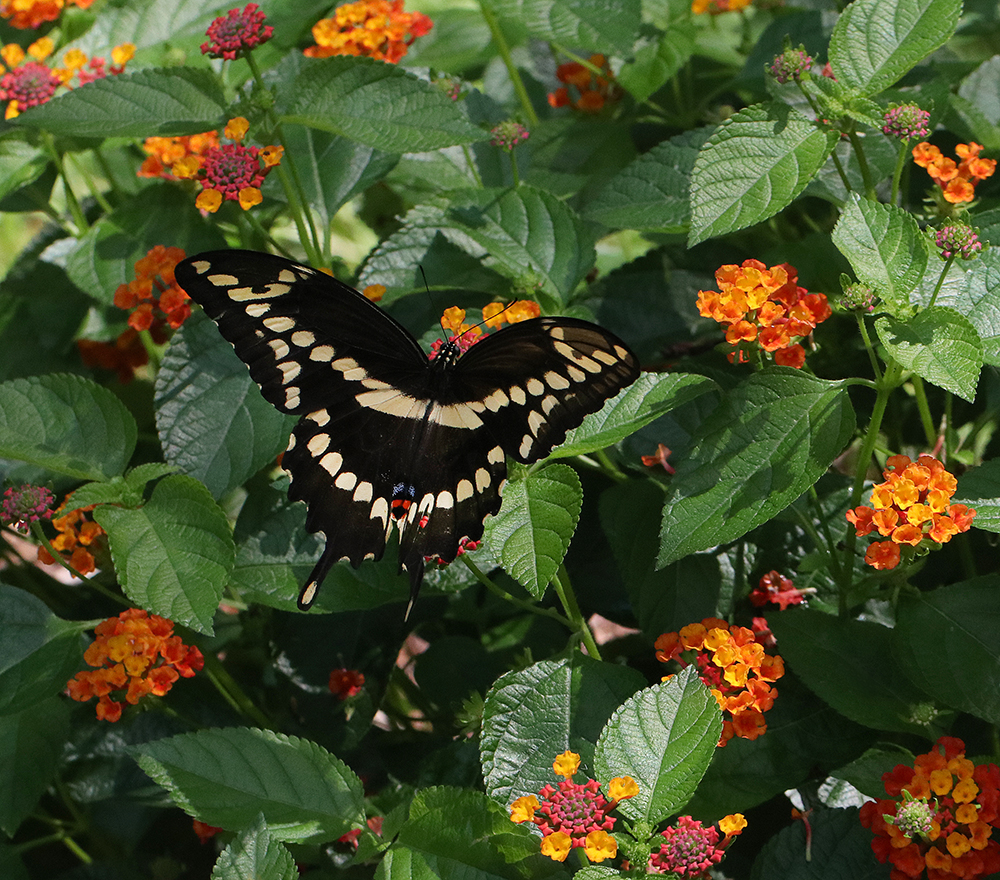
Giant swallowtail butterfly on lantana in a Pittsboro garden in early September. Photo by Debbie Roos.

Giant swallowtails can be difficult to photograph because they are constantly fluttering while nectaring! Photo by Debbie Roos.

The forewing span of giant swallowtail butterflies can exceed seven inches! Photo by Debbie Roos.

Giant swallowtail butterfly on lantana. Photo by Debbie Roos.
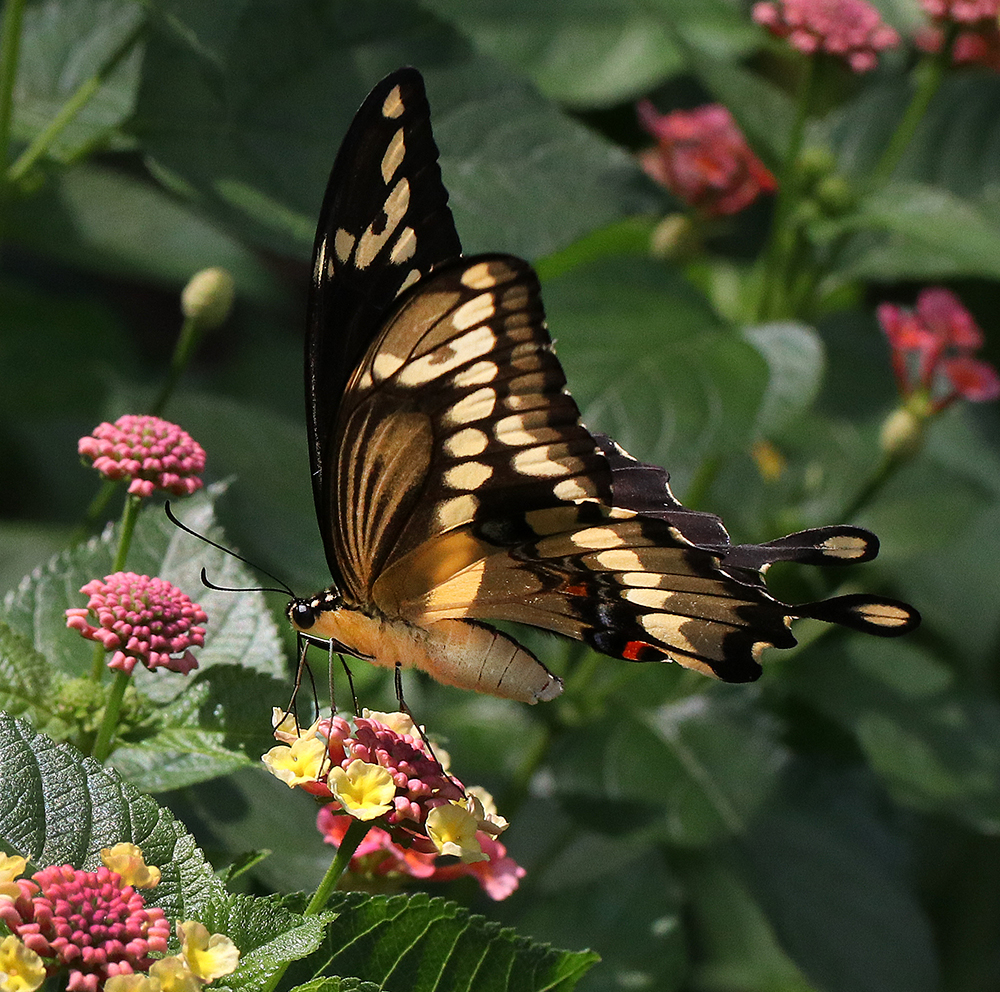
Unlike other dark-colored swallowtails, giant swallowtails are primarily yellow on the underside of their wings and have a yellow body. Photo by Debbie Roos.
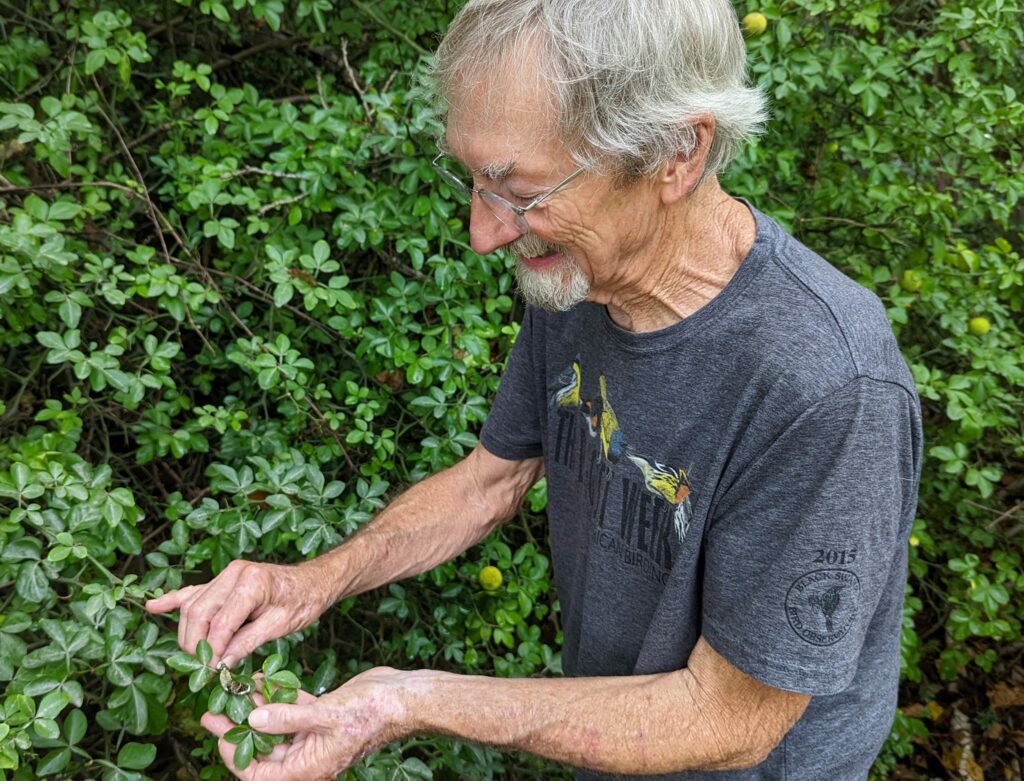
Andy relocates the giant swallowtail caterpillars that were feeding on his neighbor’s lemon trees to his hardy orange shrubs. Photo by Debbie Roos.
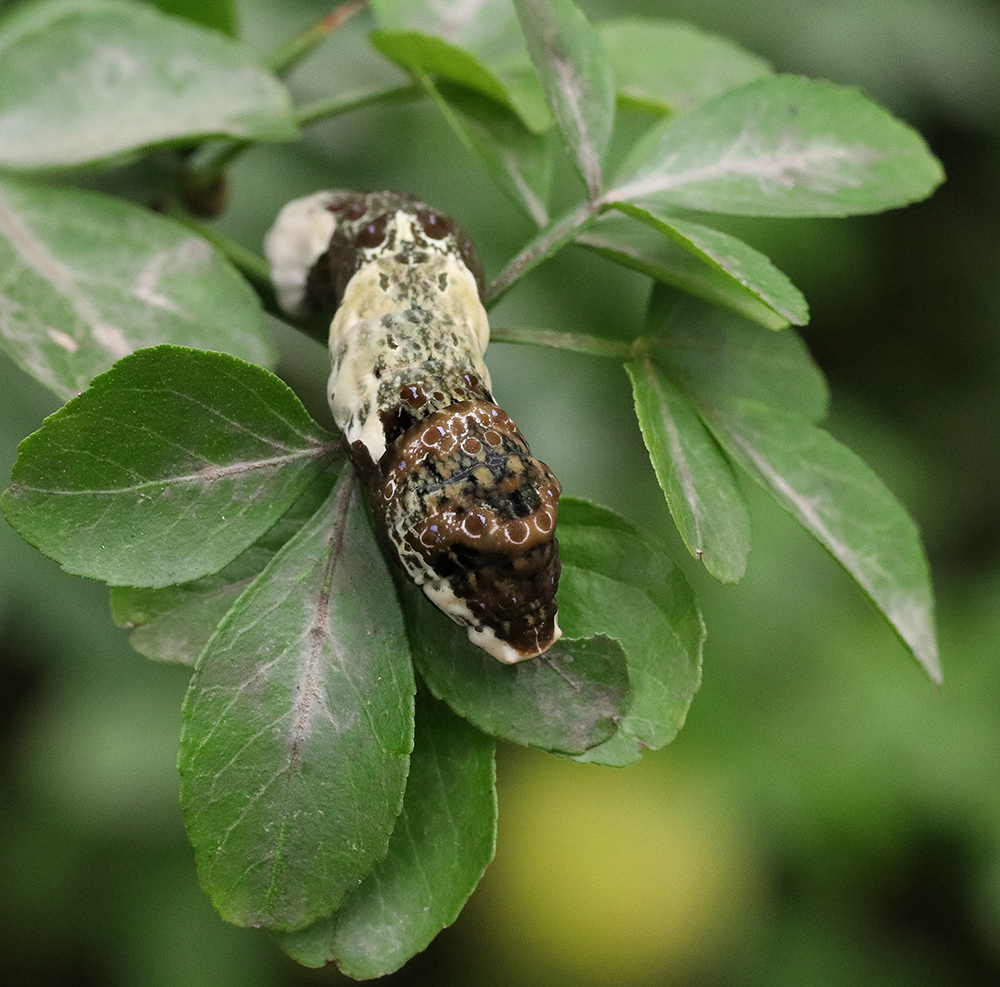
Late instar giant swallowtail caterpillar feeding on hardy orange. Photo by Debbie Roos.
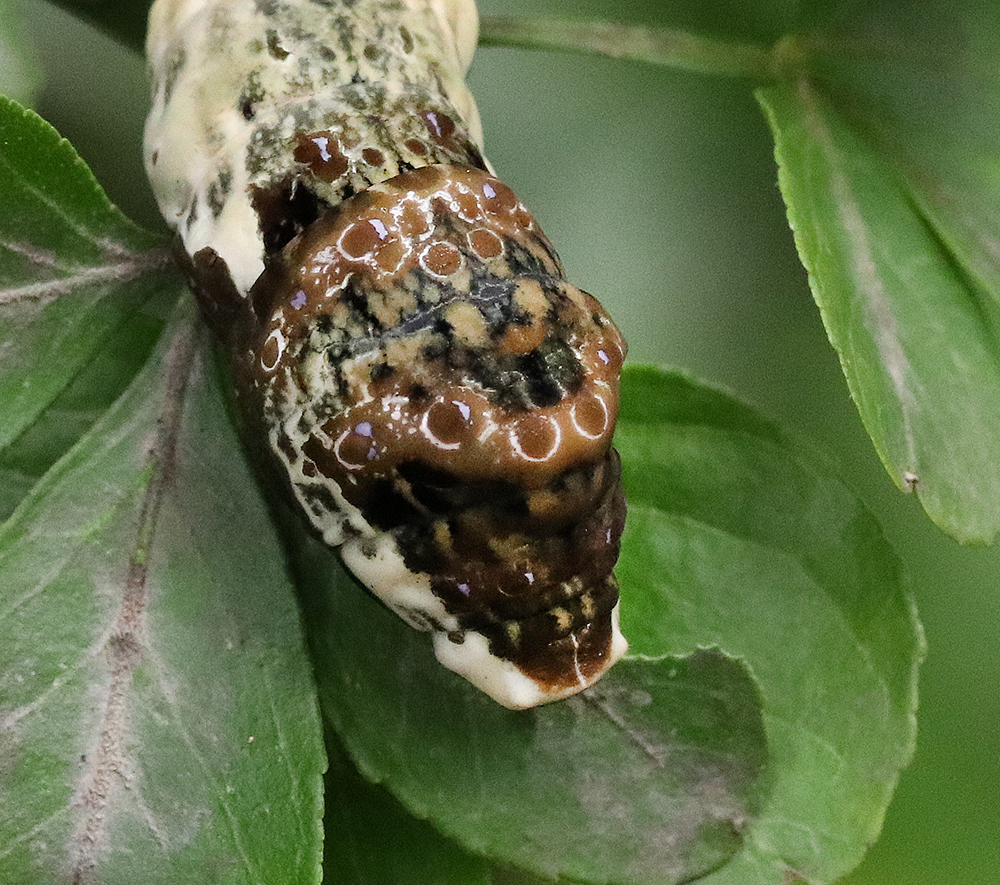
Close-up of the enlarged, swollen thorax of the caterpillar that resembles a snake’s head. Check out that dazzling coloration! Photo by Debbie Roos.
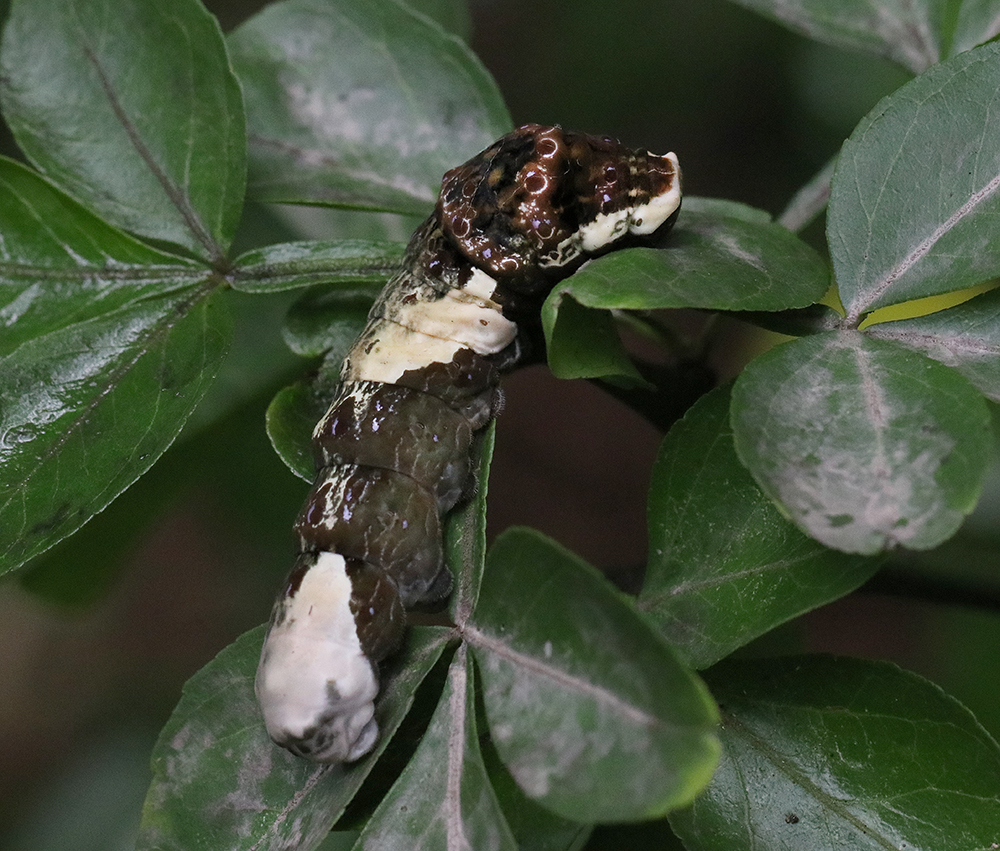
Giant swallowtail caterpillars (especially the early instar caterpillars) mimic bird poop to discourage potential predators. The mature caterpillars resemble small snakes, another defense mechanism. Photo by Debbie Roos.

Giant swallowtail caterpillar feeding on hardy orange. Photo by Debbie Roos.


